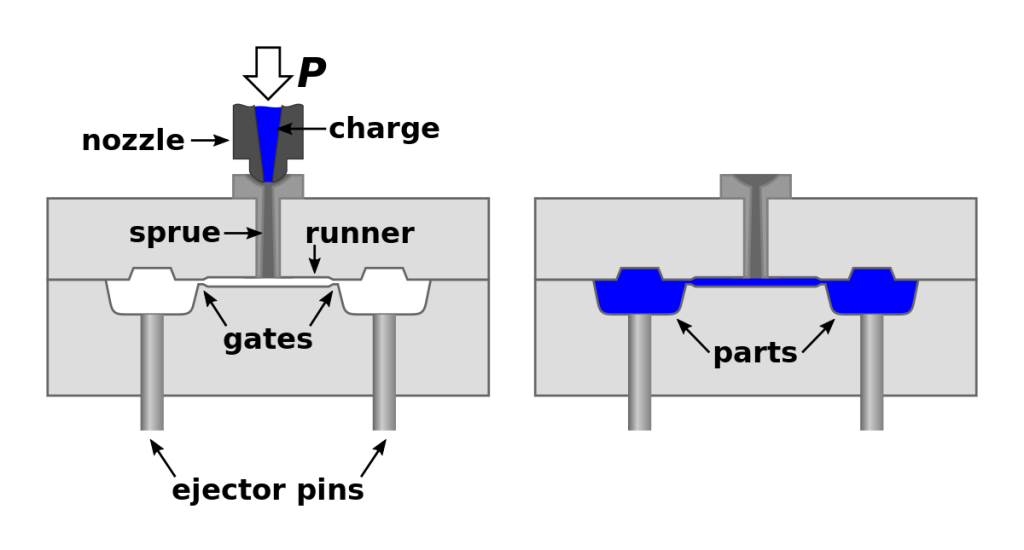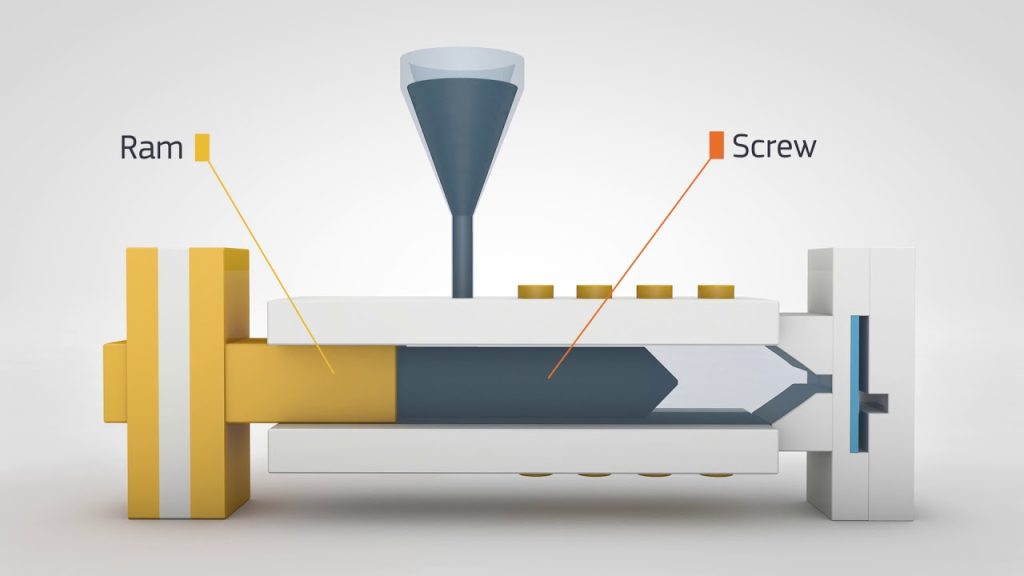Table of Contents
- Frequently Asked Questions
- What is packing pressure in injection molding?
- How is packing pressure determined in injection molding?
- What happens if the packing pressure is too low or too high?
- How can the packing pressure be adjusted in injection molding?
- What are some common issues related to packing pressure in injection molding?
Are you curious about the mechanics behind injection molding? One important factor to consider is packing pressure. This term refers to the amount of pressure needed to fill the mold with plastic and to pack it tightly into place.
Without proper packing pressure, your injection molded parts may have defects or imperfections, leading to a lower quality end product. Understanding how to control and adjust packing pressure can ensure consistent and high-quality results in your injection molding process. Let’s dive deeper into the world of packing pressure in injection molding.
What is Packing Pressure in Injection Molding?
Packing pressure is an essential parameter in injection molding that plays a crucial role in producing high-quality plastic parts. It refers to the pressure applied to the molten plastic material after the cavity is filled to ensure that the material fills any remaining voids in the mold and achieves the desired shape and dimensions.
Why is Packing Pressure Important in Injection Molding?
Packing pressure is a critical parameter in injection molding for several reasons. First, it helps to eliminate any remaining voids in the mold after the cavity is filled. Voids can cause cosmetic defects, such as sink marks, warpage, and flash, which can affect the part’s appearance and functionality.
Second, packing pressure helps to improve the part’s mechanical properties, such as strength, stiffness, and impact resistance. By applying pressure to the molten plastic material, it is possible to align the polymer chains and reduce any residual stress, resulting in a stronger and more durable part.
Finally, packing pressure ensures that the part’s dimensions are accurate and consistent. By applying pressure to the material, it is possible to compensate for any shrinkage that may occur during cooling and solidification, resulting in a part that meets the desired specifications.
Some of the benefits of packing pressure in injection molding include:
– Improved part quality and consistency
– Reduced cosmetic defects, such as sink marks, warpage, and flash
– Improved mechanical properties, such as strength, stiffness, and impact resistance
– More accurate and consistent part dimensions
How is Packing Pressure Determined in Injection Molding?
The packing pressure in injection molding is determined by several factors, including the material’s viscosity, mold design, and processing conditions.
The material’s viscosity is a critical factor in determining the packing pressure. A high viscosity material requires a higher packing pressure to ensure that it fills any remaining voids in the mold. Conversely, a low viscosity material requires a lower packing pressure to achieve the desired shape and dimensions.
The mold design is also essential in determining the packing pressure. The mold’s geometry, including the part’s wall thickness, gate location, and venting, can affect the packing pressure required to achieve the desired part quality and consistency.
Finally, the processing conditions, such as melt temperature, injection speed, and cooling time, can also affect the packing pressure required. Higher processing temperatures and longer cooling times may require higher packing pressures to achieve the desired part quality and consistency.
Packing Pressure Vs. Injection Pressure
Packing pressure and injection pressure are two critical parameters in injection molding that work together to produce high-quality plastic parts.
Injection pressure refers to the pressure applied to the molten plastic material to fill the cavity and overcome any resistance from the mold. It is typically higher than the packing pressure and is applied during the filling phase of the injection molding cycle.
Packing pressure, on the other hand, is applied after the cavity is filled to ensure that the material fills any remaining voids in the mold and achieves the desired shape and dimensions. It is typically lower than the injection pressure and is applied during the packing phase of the injection molding cycle.
The relationship between packing pressure and injection pressure is essential in achieving the desired part quality and consistency. By adjusting the packing pressure and injection pressure, it is possible to optimize the injection molding process and produce high-quality plastic parts.
Conclusion
In conclusion, packing pressure is a critical parameter in injection molding that plays a crucial role in producing high-quality plastic parts. It helps to eliminate any remaining voids in the mold, improves the part’s mechanical properties, and ensures that the part’s dimensions are accurate and consistent.
By understanding the factors that determine the packing pressure and its relationship with injection pressure, it is possible to optimize the injection molding process and produce high-quality plastic parts that meet the desired specifications.
Frequently Asked Questions
In injection molding, packing pressure is an essential element that affects the final product’s quality. The process involves filling the mold cavity with molten plastic material and applying pressure to pack the material into the mold uniformly. The following are some frequently asked questions about packing pressure in injection molding.
What is packing pressure in injection molding?
Packing pressure is the pressure applied to the molten plastic material in the mold after the injection stage. This pressure is used to pack the plastic material tightly and uniformly in the mold, filling any remaining voids, and ensuring that the plastic material conforms to the mold’s shape. The amount of packing pressure required depends on the type of plastic material, the size and shape of the mold, and the desired final product’s quality.
Applying the right packing pressure is crucial in achieving a high-quality final product. If the packing pressure is too low, the plastic material may not fill the mold entirely, resulting in voids or incomplete parts. On the other hand, if the packing pressure is too high, it may cause the plastic material to deform, resulting in part distortion or warpage.
How is packing pressure determined in injection molding?
The packing pressure required in injection molding is determined by various factors, such as the type of plastic material, the size and shape of the mold, and the desired final product’s quality. The pressure is typically calculated based on the material’s viscosity, the mold’s filling time, and the material’s shrinkage rate.
Once the required packing pressure is determined, it is programmed into the injection molding machine’s control system. The machine then applies the pressure to the molten plastic material in the mold during the packing stage, ensuring that the plastic material conforms to the mold’s shape and fills any remaining voids.
What happens if the packing pressure is too low or too high?
If the packing pressure is too low, the plastic material may not fill the mold entirely, resulting in voids or incomplete parts. This can lead to a low-quality final product that may not meet the required specifications. Additionally, low packing pressure can cause the plastic material to cool and solidify too quickly, resulting in part shrinkage or warpage.
If the packing pressure is too high, it may cause the plastic material to deform, resulting in part distortion or warpage. This can also lead to high stress levels within the part, reducing its strength and durability. Additionally, high packing pressure can cause the plastic material to overpack, resulting in excess material and longer cycle times.
How can the packing pressure be adjusted in injection molding?
The packing pressure in injection molding can be adjusted by changing the machine’s settings, such as the packing pressure, the packing time, or the holding pressure. These settings can be adjusted based on the desired final product’s quality and the type of plastic material being used.
Additionally, the mold design can also affect the packing pressure required. A well-designed mold can reduce the required packing pressure and improve the final product’s quality. It is important to work with an experienced injection molding engineer to ensure that the packing pressure is optimized for the specific application.
Some common issues related to packing pressure in injection molding include incomplete parts, voids, part distortion, warpage, and excess material. These issues can be caused by various factors, such as incorrect packing pressure, improper mold design, or inadequate cooling time.
To avoid these issues, it is essential to optimize the packing pressure for the specific application and ensure that the mold design and cooling time are adequate. Additionally, regular maintenance and inspection of the injection molding machine can help identify and address any issues related to packing pressure and ensure that the final product meets the required specifications.
In conclusion, packing pressure is a vital aspect of injection molding that can significantly affect the quality of the final product. It refers to the pressure applied to the molten plastic after it has filled the mold cavity to ensure that any gaps or voids are filled. This process minimizes the risk of defects such as warping, sink marks, and short shots.
Moreover, choosing the appropriate packing pressure for a specific material and product design requires careful consideration of several factors such as the flow rate, melt viscosity, and mold temperature. Experienced injection molders have a deep understanding of these factors and can adjust the packing pressure accordingly to produce high-quality parts.
In summary, packing pressure plays a crucial role in achieving a flawless injection-molded product. With the right packing pressure, manufacturers can produce products that meet the highest standards of quality and durability, ensuring customer satisfaction and loyalty.
Request a quote today!
[contact-form-7 id="1578" title="Contact form"]
Please compress the file into a ZIP or RAR file before uploading. Alternatively, send through your RFQ by email.
enquires@unitymanufacture.com





